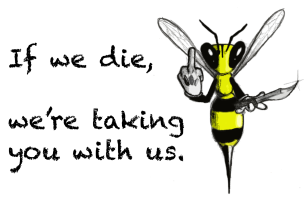
If bees were to disappear, humans will disappear within a few years.
Albert Einstein
—
I find it interesting that so much is said about bees (including here on this blog), yet many of the ‘facts’ that one hears mentioned in any variety of news sources, public presentations and even scientific articles aren’t very well sourced and at times highly suspect.
For your fact-finding benefit then, I present to you some of the established facts about bees:
- Around 90% of all flowering plants need some form of pollination by animals (the remaining 10% use other mechanisms such as wind pollination, self-pollination, etc.).
- This means that about 80% of all crop species need animal pollinators.
- When you work this out on a global scale, it turns out that about 35% of the food consumed by humanity needs pollination to exist, meaning that about 1 in every 3 bites of your food comes from an animal pollinator.
- It has been estimated (in 2005) that the pollination of our crops that we receive for free from animal pollinators is worth about €153 billion/year. I’m not so certain this is an easy (precise or accurate) calculation to make, but it suffices to say that if we had to do it ourselves, we’d go broke.
- About half of all this crop pollination is due to a single species — the noble honey bee (Apis mellifera).
- The remaining half owes its existence to myriad wild pollinators (mostly insects, but also mammals, birds, and other invertebrates as well).
- There somewhere around 20,000 bee species in the world, but only 5% of those (i.e., ~ 1000) are ‘social’, meaning species that produce some honey-like substance. There are fewer than 10 Apis species worldwide.
- Generally speaking, the contribution of native bees is under appreciated, with the number of wild pollinator species contributing more to yields than their abundance per se. Some good examples studies demonstrating this include those examining apple & coffee production.
- While beekeeping (of mostly Apis mellifera) is generally increasing around the world, there have been some well-publicised and shocking declines around the world (varying from between 25 and 60% depending on region). These declines are due to many interacting causes, including pesticides, agricultural intensification, loss of adjacent native habitats, loss of ruderal vegetation, disease, parasites and even climate change.
I hope these little facts and figures help you out. Now go spread the word about how important it is to keep a healthy pollinator community around!
CJA Bradshaw

